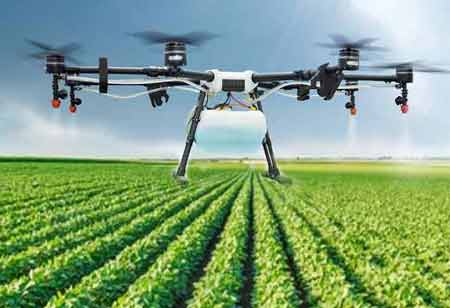Thank you for Subscribing to Agri Business Review Weekly Brief
Vertical Farming through Controlled Agriculture Environment
Vertical farming is a technology that is gaining popularity for raising indoor crops in a vertical arrangement.

By
Agri Business Review | Thursday, May 26, 2022
Stay ahead of the industry with exclusive feature stories on the top companies, expert insights and the latest news delivered straight to your inbox. Subscribe today.
With cutting-edge technology, vertical farming is based on the idea of agriculture in a controlled environment, where crops can thrive in the best possible environment.
Fremont, CA: Vertical farming is a technology that is gaining popularity for raising indoor crops in a vertical arrangement. A vertical system entails the development of plants in controlled conditions where every factor affecting their growth is closely monitored and adapted to their specific requirements. Vertical farming is founded on the concept of agriculture in a controlled environment, with cutting-edge technologies used to give optimal growing conditions for any crop. Vertical farming is ready to reach new heights with the help of modern technologies like AI, ML, and IoT.
The only way to describe vertical farming is to comprehend the technology that make it possible. In controlled environment agriculture, several factors are managed, and many emerging technologies such as AI, ML, and IoT drive indoor crop production innovation.
Controlled Environment Agriculture (CEA)
Vertical farming is basically based on controlled environment agriculture since it integrates many technologies to offer plants optimal environmental and growth conditions during their growth. Using a controlled environment system, vertical farming may produce pest-free, year-round crops that are always fresh. In vertical farms, plants are secluded from the outside environment, and staff takes preventative measures against pest infestations that could cause crop loss. Although controlled environment systems are generally linked with vertical agriculture, they are also applicable to horizontal agriculture.
Vertical farms monitor technical variables like temperature, carbon dioxide, oxygen, lighting, humidity, nutrient content, pH, pest management, irrigation, and harvesting with the aid of intelligent sensors. Hydroponic, aeroponic, or aquatic cultivation is typical in regulated conditions. In addition, controlled environment agriculture can use modern imaging and sensor technology, including cameras and thermal imaging, to measure plant growth, temperature, and other variables. Currently, controlled environment systems have proven to be extremely effective for cultivating leafy greens, herbs, microgreens, and crops such as tomatoes, peppers, watermelons, and sweet corn.





